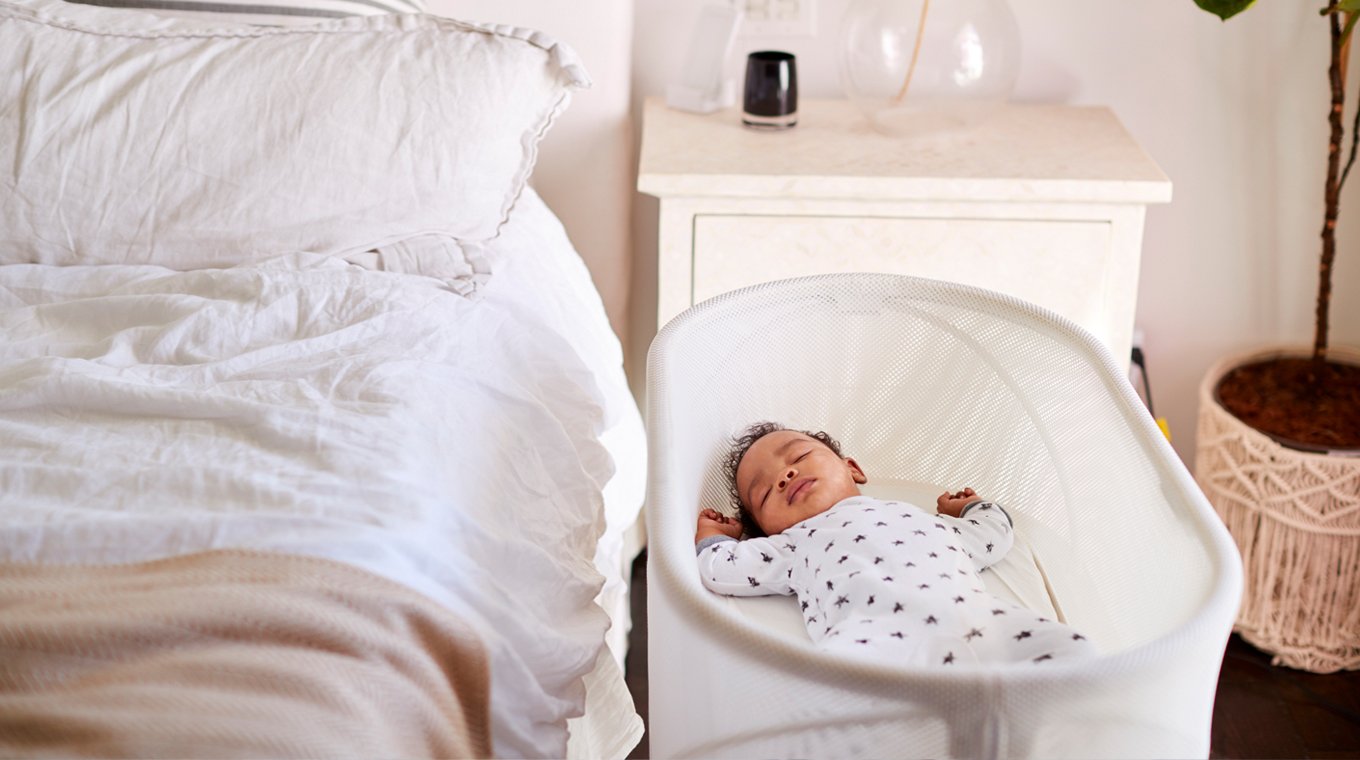
IN THIS ARTICLE
October is Sudden Infant Death Syndrome (SIDS) Awareness month, and it’s a critical reminder to educate yourself and others on the facts on SIDS so your baby can sleep safe and sound.
Each year in the United States, about 3,400 babies die from SIDS, according to the American Academy of Pediatrics. This rate has been decreasing over the past two decades but Black and Native American infants are disproportionately affected. The biggest SIDS risk by age is for children between 2 and 4 months.
Here are a few things you can do to bring awareness to, and help the fight against, SIDS.
Bring awareness: What is SIDS?

1. Know what SIDS is
SIDS is the sudden and unexpected death of healthy babies younger than 1 year old. Also called “crib death,” SIDS often happens when the baby is sleeping or around their crib. A doctor may determine a SIDS diagnosis when all other possible causes of death are ruled out.
Educate yourself and others: What causes SIDS?

There are no identified causes of SIDS or symptoms of SIDS. Despite this uncertainty, there are some key environmental and physical factors that can put an infant at risk of SIDS.
2. Know these factors that might contribute to the risk of SIDS:
- Low weight at birth
- Stomach sleeping or side sleeping positions
- Respiratory problems
- Brain defects
- Smoking during pregnancy or secondhand smoke
- Overheating, which can coax her into a deeper sleep
- Premature birth
- An old crib
- Too many soft surfaces in the crib
- Co-sleeping with another person
- Using a sleep positioner or wedge
- Sleeping on an adult bed, chair or couch
Take action and reach out

Here are some actions you can put into practice this month to help prevent SIDS. Also important: Support SIDS research and those that have been affected by SIDS.
3. Spread awareness
Due to the suddenness of SIDS, it’s critical to share information with those around you, including friends, family and other caregivers, like grandparents and babysitters.
4. Reach out to someone who has been affected by SIDS
For anyone, SIDS can be a devastating experience to go through. “My son was 4 days away from 8 months old, never one health concern, advanced in his milestones, saying mama, happy and brighter than the sun itself,” Kyrstyn Johnson wrote for Mom.com. “I was in total bliss with the direction my life was going. Then, just like that, it was gone.”
If you or someone else is struggling with this loss, consult your doctor about seeking mental health support or grief counseling.
5. Donate your time or resources
If possible, consider donating to the American SIDS Institute, which is an organization dedicated to research, education and family support relating to SIDS so that more babies can sleep safely.
6. Take these precautions in your baby’s room:
- Keep a minimalist crib: Remove pillows, stuffed animals, and bumper pads when putting your baby to sleep because soft surfaces can easily block airways. According to the AAP, in the majority of SIDS cases, the baby is found with bedding over the head. The mattress should be firm, meaning your baby won’t make an indent when she is lying on it, and wrapped in a fitted sheet.
- Let the baby sleep alone—but not totally alone: Although babies are fussy, avoid co-sleeping. Place the crib in your own bedroom within arm’s reach for the first six months to a year of her life. “The majority of sleep-related infant deaths occur when babies are sleeping on their stomach, or with soft bedding nearby, or when bed-sharing with their mother, other caregiver or other family members,” Dr. Fern Hauck, a pediatrics researcher at the University of Virginia in Charlottesville who serves on the AAP task force on SIDS told TODAY.com.
- Back sleeping: When it’s time for bed or a nap, make sure your baby is sleeping on her back. SIDS research found that stomach sleeping or side sleeping can make breathing more difficult. At this age, babies’ muscles aren’t developed enough to lift their head and can be stuck in a stomach sleeping position. If your baby falls asleep in a car seat, get them to a place where he can be placed on his backs on a firm surface as soon as possible.
- Avoid overheating: It’s also important to not over swaddle your baby so he doesn’t overheat. Signs of overheating include sweating or if their skin feels hot to the touch.
7. Take note of these practices to minimize your baby’s SIDS risk:
- Tummy time: During the daytime, give your baby supervised tummy time to help improve his motor development and encourage him to roll over when sleeping.
- Breastfeed, if possible: Babies who are breastfed exclusively vare associated with having a lower risk of SIDS.
- Use a pacifier: Pacifiers have also been found to reduce the risk of SIDS when used during sleep time, even if it eventually falls out. If your baby doesn’t seem to like pacifiers, don’t force it.




